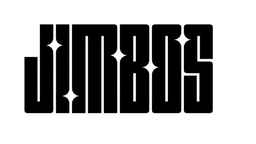Why Your Polishing Results Are Inconsistent — And How to Fix It
Ever used the same polish and pad combo on two cars—only to get totally different results? You're not alone. Here's why paint correction feels inconsistent… and the one simple shift that fixes it for good.
The Real Reason Your Results Vary
Most polishing systems are built on assumptions:
- Assumption #1: All paint systems behave the same
- Assumption #2: One pad always finishes the same way
- Assumption #3: The compound “controls” the result
But in the real world, paint type, pressure, machine speed, pad age, and humidity all influence how well a polish performs.
The Over-Complicated Solution (That Doesn’t Help)
Some systems try to fix this by offering a dozen liquids with specific “cut vs gloss” ratings or formulas for “hard” vs “soft” paint. But that often creates more confusion:
- ❌ Too many variables to control
- ❌ Too many decisions before you even get started
- ❌ You still end up guessing… and hoping
The Fix: Control the Pad, Not the Liquid
With a pad-dependent polish like Picture Perfect Polish, you simplify the equation. One liquid, two pad options, and complete flexibility:
- Cut & Finish Pad for heavy correction
- Black Finishing Pad for refining gloss
This lets you fine-tune based on the actual paint you’re working with—not just what the bottle says.
Why It Works
- ✅ Less overthinking, more control
- ✅ Faster results with fewer mistakes
- ✅ Adaptable to any car, any clear coat, any condition
How to Troubleshoot On the Spot
- Try a test spot with Picture Perfect Polish + Cut & Finish Pad
- If it hazes slightly on soft paint, switch to the Black Finishing Pad
- If it doesn’t cut enough on hard paint, increase pressure or do 1–2 extra passes
You’re not guessing anymore—you’re adjusting with purpose.
Recommended Setup
Related Posts
- One-Step vs Multi-Stage Polishing: What’s Actually Better?
- Polish for Soft vs Hard Paint? Here’s a Smarter Way
Frequently Asked Questions
Why does the same polish work differently on each car?
Because paint types, temperature, humidity, pad condition, and pressure all vary. That’s why rigid systems often fail in the real world.
What makes pad-dependent polishing more consistent?
You control the correction level through pad choice—not liquid selection. This gives you more predictable outcomes.
Is Picture Perfect Polish good for all clear coats?
Yes. Just match it with the right pad based on the condition and hardness of the paint.
Do I need to switch pads mid-job?
Usually not. You can adjust technique instead. But for high-gloss finishes or delicate paint, swapping to the Black Finishing Pad is an easy upgrade.



